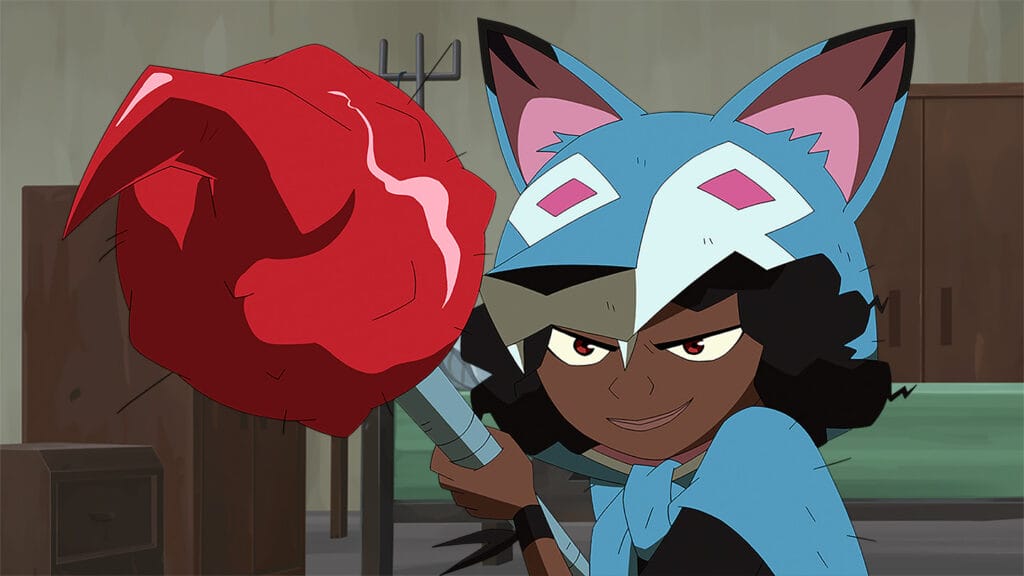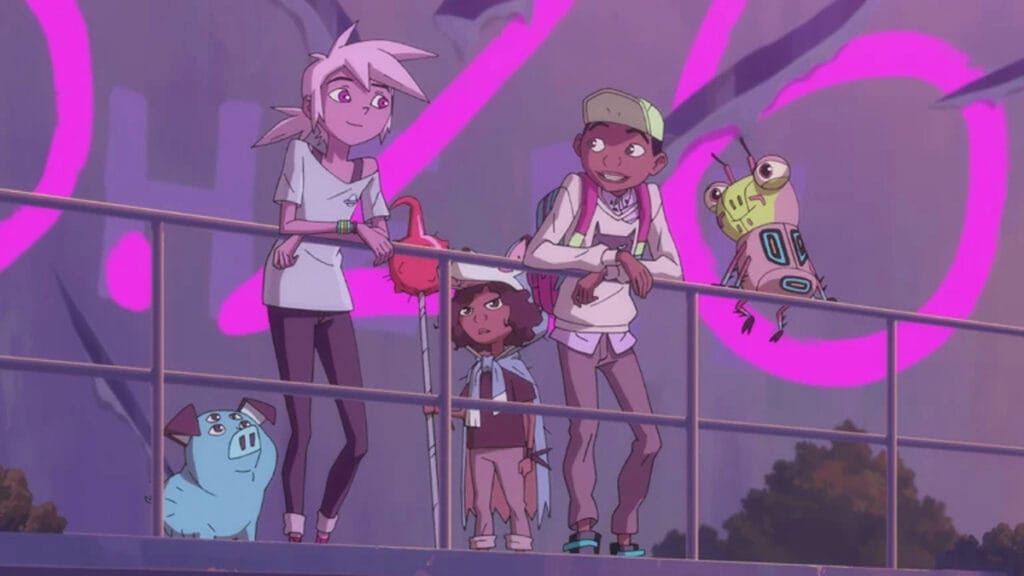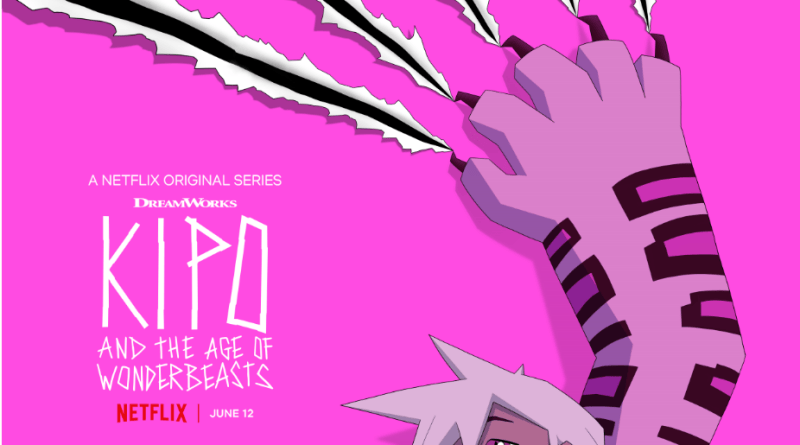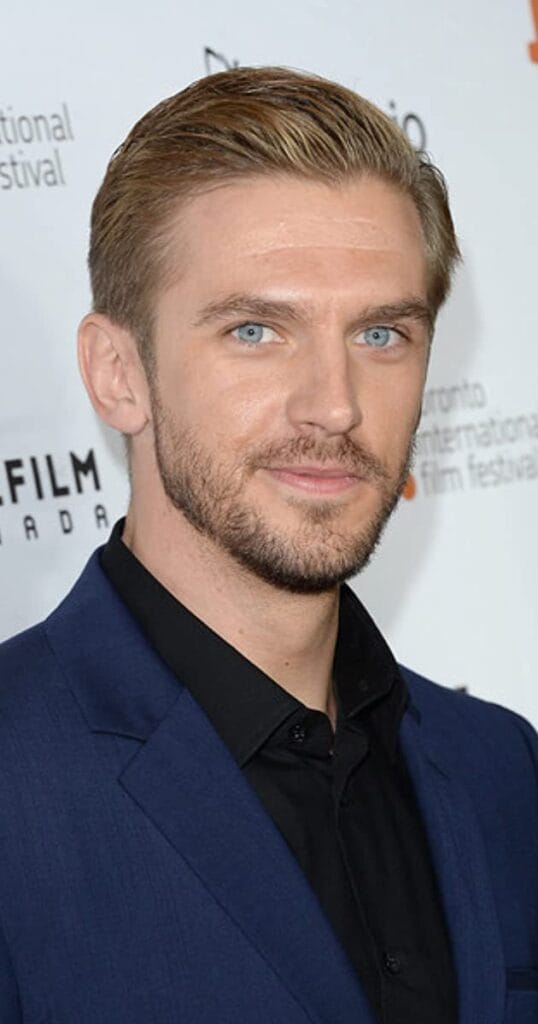When “Kipo and the Age of Wonderbeasts” first arrived on Netflix back in January, it was positively received by those who were lucky enough to find it. Created by Radford Sechrist, and with its immense creativity, and lovable characters, and unforgettable soundtrack, it surpassed its conventional storyline and gained a dedicated following.
With the second season premiering on June 12, now that the show had its fans, they had to diverge from the clichés of the first season’s plot and prove that it could bring new things to the table. Although the show does sacrifice part of its foundations to its detriment, overall, it builds upon what it first made in order to expand its already memorable world further and create a story that is worth watching regardless of who you are.
After the first season concluded with Scarlemagne invading and kidnapping most of Kipo’s colony of humans. Season 2 opens with Kipo, Wolf, Benson, Dave, and Mandu going to rescue them, with Kipo learning more about her powers as a part-mute (mutant). As tensions rise all over the Surface, the gang must explore new places and learn more about Kipo’s past in order to gain the forces necessary to bring Scarlemagne’s reign to an end. But when a new enemy arises, that shifts the dynamic between humans and mutes, who can the gang really trust to be in the right?

One of the best aspects that worked in the show’s favor back in season one was the incredibly creative post-apocalyptic world it established throughout its 10-episode run. While it continues referencing the locations it already established, the new venues are just as memorable, if not more. With such examples including otters who love performing stage plays and a child-like fungus that spans over a whole building, every new addition joins the gallery of characters in this world and fits right in despite how outlandish they may seem at first glance.
These new characters are also backed by strong voice acting, which can be said of all the characters in the show. Dan Stevens (Beauty and the Beast, Legion) steals every scene he’s in as the erratic and power-hungry Scarlemagne and Karen Fukuhara (She-Ra and the Princesses of Power, Suicide Squad) retains Kipo’s child-like determination and gung-ho attitude throughout every scene; meanwhile, newcomers like Jack Stanton as Fun Gus and John Lavelle as Puck manage to become memorable by being a surprisingly intimidating presence and the vivacious leader of a band of “thea-otters” respectively.
Despite having a large cast in its arsenal, the writing and art style work together to make every moment in Kipo’s world that much more memorable. The Surface continues to be mind-blowing and unique in every new setting, creating settings that, regardless of whether they’re welcoming or not, will stick with viewers long after the show moves on from them. When the characters explore these locations and occasionally do battle within them, I found them easy to follow and understand, which is not always the case for fight scenes. The animators have managed to flourish with Kipo’s art style, creating a memorable and unique look to everything without making it hard to comprehend certain events when they happen.

These moments are complemented by the show’s stellar writing, creating engaging dynamics between all characters, both major and minor, and giving them jokes that land almost every time they’re presented. That is not to say that things never get serious because there are several moments where the show slows down and makes viewers think. Family and friendship continue to be major themes from the first season, but in season 2, questions of equality and change start to arise as well.
Do humans and mutes deserve to live on equal standing? Is one species inherently better than the other? Can they learn to co-exist, if such a thing is possible? Although the show may not explicitly bring these questions up, they do plant seeds in viewers’ minds, letting them reflect while possibly applying them to their real-world and seeing how they can make their environments more receptive of others.

That’s not to say that this season is flawless. The most glaring area worth criticism is the dropping of one of Season 1’s biggest side stories. One of the show’s biggest side characters, who was the focus of whole episodes at times, was suddenly dropped early on this season. While it is replaced by side plots that feel somewhat similar in regards to their purpose in the story, the character’s arc itself feels as if it was abandoned and cut short. Although it does not take too much away from the show itself, it does leave something to be desired and brings into question the reason that it was such an initial focus to suddenly be forgotten about.
Despite this subplot’s absence, Kipo and the Age of Wonderbeasts builds upon its strengths and picks up, even more, expanding its world in all-new ways while still maintaining its creativity and charm. Bringing up new themes and characters that mesh well with its old elements, the show elevates itself to new heights and has become a new must-watch program on Netflix. Though it is not flawless, Kipo has created a world that is worth exploring, and one that will only grow further with time. Season 2 may have just come out, but I look forward to hearing more news about Kipo and seeing what else this world of humans and mutes can bring to the table.
What did you think of Kipo and the Age of Wonderbeasts’ second season? Did you love it, or did you have issues with it? Let us know! Send us a tweet on Twitter or a DM on Instagram!
For more news on Kipo and the Age of Wonderbeasts and other Netflix animated shows, make sure to keep it locked here at The Nerdy Basement. Consider supporting our Patreon as well! It’s a simple way of supporting us so we can keep on providing you with your Nerdy News!



